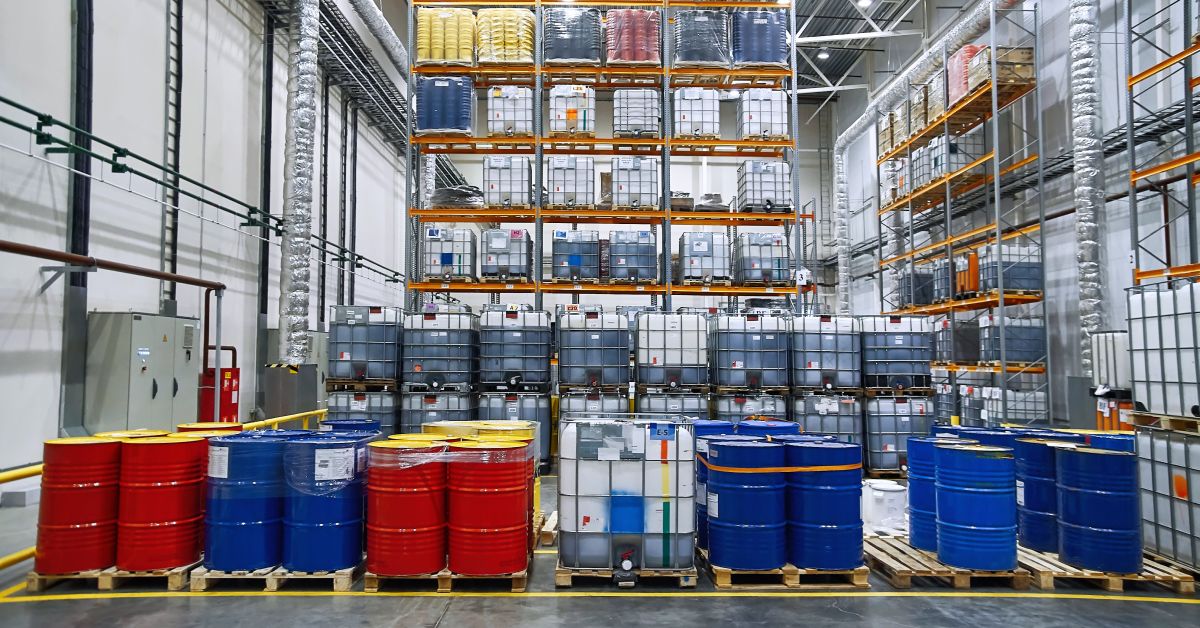The circular economy focuses on creating widespread benefits for society. It’s revolutionizing how the world thinks about growth by encouraging people to eliminate waste, maximize the use of materials, and rejuvenate their natural surroundings.
Solvent recycling reflects these goals with its innovative approach to reducing waste and conserving valuable resources. Let’s explore the ways solvent recycling contributes to the circular economy.
Understanding the Circular Economy
The circular economy prioritizes reducing, reusing, and recycling materials to build a more sustainable economic model. Unlike the traditional linear economy—which follows a take-make-dispose pattern—the circular model seeks to extend the lifecycle of products.
Industries across the globe recognize the value of adopting these sustainable practices, including both environmental benefits and economic incentives. As industries transition, they discover that solvent recycling systems can effectively close the loop.
Benefits of Adopting Circular Practices
a circular economy The transition to a circular economy offers benefits like:
- Environmental impact: The circular economy lowers carbon emissions and conserves natural resources by reducing waste and pollution. This establishes healthier ecosystems and a more sustainable planet.
- Economic growth: Companies that adopt circular practices see cost savings from reduced material use and waste management expenses.
- Job creation: The circular economy can create new jobs in industries such as recycling, remanufacturing, and sustainable design.
The Role of Solvent Recycling
Solvent recycling is the process of reclaiming used solvents, restoring them, then reusing them. These solvent recycling systems integrate filtration and distillation technologies that rejuvenate solvents, making them viable for repeated cycles in industrial applications.
In sectors like manufacturing, pharmaceuticals, and automotive, recycled solvents maintain product quality while reducing environmental impact. These industries reduce their waste footprint while saving money from the lack of purchasing new solvents.
Moreover, solvent recycling contributes to the circular economy by facilitating closed-loop processes where materials go back into production. The process conserves resources and enhances operational efficiency by ensuring that businesses have a consistent supply of solvents without relying on virgin resources.

Environmental Benefits of Solvent Recycling
Many businesses contribute to hazardous waste production and pollution. Solvent recycling minimizes the introduction of toxic chemicals into ecosystems to preserve biodiversity and protect the public’s health.
RBy reusing solvents, industries decrease the demand for virgin chemicals. This practice conserves natural resources and reduces carbon emissions because industries will minimize their ecological footprint from extraction and processing.
The adoption of these eco-friendly practices encourages industries to shift towards greener processes, inspiring a ripple effect across sectors. Beyond immediate resource savings, solvent recovery supports long-term environmental benefits. They build up the Earth’s resilience against resource scarcity and mitigate the adverse effects of industrial pollution.
Economic Advantages of Solvent Recycling
Companies implementing solvent recycling reduce their expenses on raw materials, as they rely less on purchasing new solvents. Furthermore, solvent recycling machines cut waste disposal expenses because it eliminates the need to treat and discard hazardous material. This translates into improved profit margins and enhanced financial stability.
Beyond saving costs, solvent recycling fuels innovation and market expansion in the recycling sector.
Businesses investing in solvent recycling systems gain a competitive edge, as consumers increasingly value sustainable practices. They can find themselves in a better market position to capture new customer segments and increase consumers’ loyalty to their brand. As more organizations recognize these economic benefits, they will integrate solvent recycling into their sustainability agendas and adapt to an environmentally responsible business model.
Comparing Solvent Recycling With Other Recycling Methods
Solvent recycling distinguishes itself from other recycling methods through its efficiency and environmental impact. Unlike traditional recycling—often requiring extensive processing—solvent recycling utilizes advanced filtration and distillation to reclaim materials quickly and effectively.
Industries find solvent recycling better due to its ability to maintain product quality while reducing waste and emissions. This process conserves energy and resources, offering a cleaner alternative to producing new solvents.
On-Site vs. Off-Site Solvent Recycling
On-site solvent recycling offers significant advantages, such as greater control over the recycling process and lower transportation costs. Companies can immediately reuse solvents for streamlined operations that improve manufacturing productivity.
By handling recycling on-site, companies cut logistical expenses and avoid potential delays, keeping tight control over their timelines.
Off-site recycling, on the other hand, results in higher costs and less project oversight. On-site recycling directly supports sustainability goals by reducing the carbon footprint linked to material transportation and ensuring prompt resource reuse.
Community and Social Impacts of Solvent Recycling
Solvent recycling has positive effects on communities. As industries adopt recycling practices, local ecosystems benefit from decreased hazardous waste levels which translates to cleaner air and water. This environmental improvement enhances public health and the quality of life for civilians.
These programs also encourage community engagement in sustainability. Increasing awareness and inspiring collective action towards environmental stewardship will bring the community to make a difference.
How Businesses Can Implement Solvent Recycling
Businesses can enhance sustainability and operational efficiency by implementing solvent recycling. To begin, companies should purchase a solvent recycling machine from Solvent Waste Management. Your business needs to select equipment that aligns with your specific needs. The machine will smoothly integrate into your existing process to provide minimal disruption and heightened efficiency.
Once you choose the appropriate machine, you’ll need to train the staff to operate it correctly. This training ensures safety and maximizes the recycling process’s performance.
Setting up the recycling system involves installing the machine in an accessible location that complements the current workflow. With a streamlined arrangement, your business can immediately adapt to the machine, reuse recycled solvents, reduce waste, and lower expenses associated with solvent procurement.

Can Businesses Pair Solvent Recycling With Other Practices?
Businesses can amplify their sustainability efforts by combining solvent recycling with other eco-friendly practices. For example, companies can use energy-efficient machines, such as LED lighting or high-efficiency HVAC systems, in tandem with solvent recycling.
Water-saving technologies, including low-flow faucets and water recycling systems, allow businesses to lower water consumption. Choosing sustainable materials, like recycled paper or biodegradable packaging, supports a circular economy. Every effort to cut down on carbon emissions will have a positive effect on the environment.
Conclusion
Solvent recycling advances the circular economy and bridges the gap between sustainable practices and economic efficiency. By conserving resources and fostering innovative industrial processes, solvent recycling supports environmental stewardship and enhances businesses’ profit. As industries increasingly recognize its value, the practice will shape a more resilient Earth and sustainable future.

